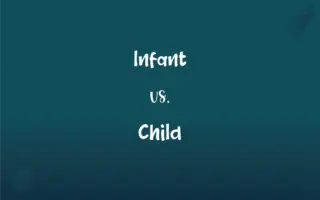Polycarbonate vs. Plastic: What's the Difference?
By Janet White || Published on December 12, 2023
Polycarbonate is a specific type of strong, durable plastic; Plastic is a broad category of synthetic or semi-synthetic materials.

Key Differences
Polycarbonate is a specific type of plastic known for its strength, durability, and transparency. It's a thermoplastic polymer that is particularly useful in applications where impact resistance and transparency are crucial, such as in safety glasses and bulletproof windows. Plastic, in general, refers to a wide range of synthetic or semi-synthetic materials that are moldable and made primarily from petrochemicals. Plastics encompass a variety of materials, including polycarbonate, but also others like polyethylene and PVC.
Polycarbonate is often chosen for products where toughness is required because it's less likely to crack or shatter compared to other plastics. This quality makes it ideal for use in safety equipment, optical devices, and certain types of packaging. Plastics, on the other hand, can vary greatly in their properties, including flexibility, durability, and resistance to heat and chemicals. This diversity makes them suitable for an enormous range of applications, from disposable containers to high-strength industrial components.
In manufacturing, polycarbonate is valued for its ease of molding and thermoforming, as well as its ability to withstand high temperatures without losing its shape. It's also known for being lightweight yet extremely strong. Plastics, depending on their type, can be engineered to possess a variety of characteristics, including flexibility, transparency, or resistance to wear, allowing for their use in everything from clothing and packaging to automotive and aerospace industries.
Environmentally, polycarbonate can pose challenges due to its non-biodegradable nature and the potential release of bisphenol A (BPA) during decomposition, raising concerns about environmental and health impacts. Plastics, in general, have raised significant environmental concerns, particularly around issues like pollution and recycling. Different types of plastics vary in their recyclability and impact on the environment.
Polycarbonate is a specific, high-performance type of plastic known for its strength and clarity, while plastics as a whole are a diverse group of materials with a wide range of properties and uses.
ADVERTISEMENT
Comparison Chart
Composition
A specific type of thermoplastic polymer.
A broad category of synthetic or semi-synthetic materials.
Properties
Known for strength, durability, and transparency.
Varies widely, from flexible to rigid, transparent to opaque.
Uses
Safety equipment, optical devices, bulletproof windows.
Diverse, including packaging, construction, textiles.
Environmental Impact
Concerns over BPA release and non-biodegradability.
Broad concerns about pollution, recycling, and biodegradability.
Manufacturing
Easily molded and thermoformed, heat resistant.
Varies, some are heat resistant, others are designed for single use.
ADVERTISEMENT
Polycarbonate and Plastic Definitions
Polycarbonate
High Impact Resistance.
Polycarbonate panels are popular in safety glazing.
Plastic
Moldable Substance.
Plastic toys come in various shapes and colors.
Polycarbonate
Transparent Material.
Polycarbonate is often used in the production of clear plastic bottles.
Plastic
Synthetic Material.
Plastic bags are widely used for grocery shopping.
Polycarbonate
Heat Resistant.
Polycarbonate can withstand high temperatures in industrial applications.
Plastic
Found in Packaging.
Plastic containers are used for food storage.
Polycarbonate
Used in Electronics.
Polycarbonate is a common material for making smartphone cases.
Plastic
Used in Construction.
Plastic piping is common in modern plumbing.
Polycarbonate
Durable Thermoplastic.
Polycarbonate is used in making shatter-resistant eyewear.
Plastic
Versatile Material.
Plastic is used in manufacturing a wide range of household products.
Polycarbonate
Any of a group of thermoplastics that are linear polyesters of carbonic acid, especially those derived from bisphenol A and phosgene, characterized by high-impact strength, light weight, and flexibility, and used as shatter-resistant substitutes for glass.
Plastic
Capable of being shaped or formed
Plastic material such as clay.
Polycarbonate
(chemistry) Any of a range of polymers of aromatic carbonates; they are used to make light, flexible alternatives to glass. Abbreviation: PC
Plastic
Relating to or dealing with shaping or modeling
The plastic art of sculpture.
FAQs
What are common uses of polycarbonate?
In safety equipment and optical devices.
What makes polycarbonate unique?
Its high strength and transparency.
Are there biodegradable plastics?
Yes, but not all plastics are biodegradable.
How is plastic defined?
A broad category of moldable synthetic materials.
Are all plastics like polycarbonate?
No, plastics vary widely in properties.
How are plastics generally recycled?
Through various processes, depending on type.
What is polycarbonate?
A strong, durable type of plastic.
Is polycarbonate recyclable?
Yes, but recycling methods vary by region.
How is plastic used in packaging?
As containers, wrappers, and bottles.
How does polycarbonate react to heat?
It's heat resistant to a degree.
Is polycarbonate impact resistant?
Yes, it's highly resistant to impact.
Can plastics be flexible?
Yes, some plastics are very flexible.
Does polycarbonate contain BPA?
Some types do, but BPA-free options exist.
Can plastics withstand high temperatures?
Some types can, others cannot.
Are all plastics transparent like polycarbonate?
No, transparency varies among plastics.
Can polycarbonate be transparent?
Yes, it's known for its clarity.
How versatile are plastics in manufacturing?
Extremely, with a wide range of applications.
Is polycarbonate used in electronics?
Yes, in items like smartphone cases.
Are plastics harmful to the environment?
Concerns exist about pollution and sustainability.
What industries use polycarbonate?
Automotive, aerospace, and electronics.
About Author
Written by
Janet WhiteJanet White has been an esteemed writer and blogger for Difference Wiki. Holding a Master's degree in Science and Medical Journalism from the prestigious Boston University, she has consistently demonstrated her expertise and passion for her field. When she's not immersed in her work, Janet relishes her time exercising, delving into a good book, and cherishing moments with friends and family.







































































